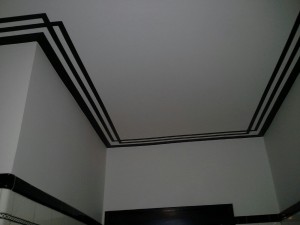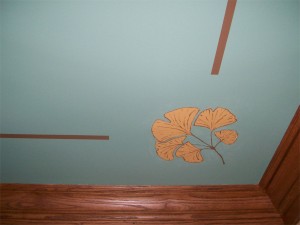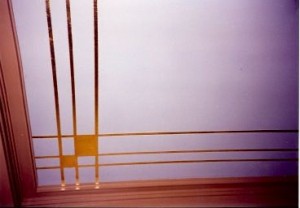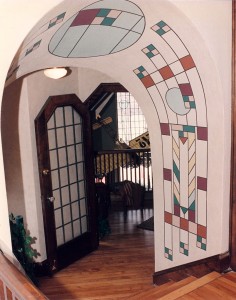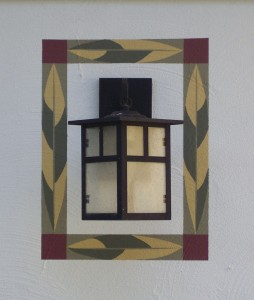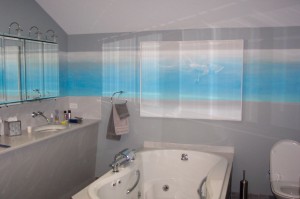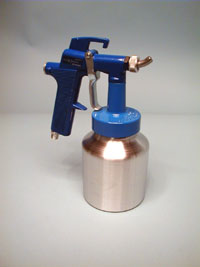A client from the North Shore of Chicago recently had a problem with the decorative finishing in her living room. The problem was two-fold: she was tired of her fifteen-year old trompe l’oeil mural, but still loved the strie texture and softly mottled glazed finish on her walls. She was also looking to change the color of the wall from a blueish green to a yellowish green. The main challenges were to make the mural completely disappear, including its painterly texture, and recreate the strie texture in the surrounding walls.
A strie finish is a traditional finish that is generally created by dragging a brush, a comb or steel wool through a glaze, thereby creating a vertical or horizontal pattern (sometime both). In this case, the strie pattern was created not by dragging a comb through a glaze, but the basecoat instead, which made for a very subtle texture. In order to prevent the finish from closing back on itself, we had to thicken the basecoat with an additive. To complete the finish, we softly mottled a white glaze over the wall surfaces. The overall effect was subtle and beautiful, as shown in the after pictures. The old look of her living room was faithfully recreated, with the modifications the client had requested.
Matching a decorative finish can be daunting task, especially old finishes. The original paints are no longer to be found, even if they were still usable. Additionally, the technology of paint has greatly evolved, which means that today’s products do not perform the same way. In our painting and decorating company, we are committed to using our knowledge and skill to meet the challenges of projects such as these.







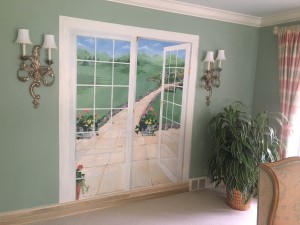

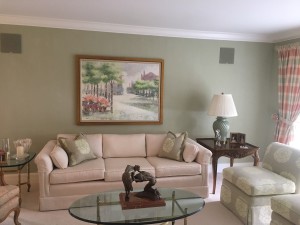
 Follow
Follow

